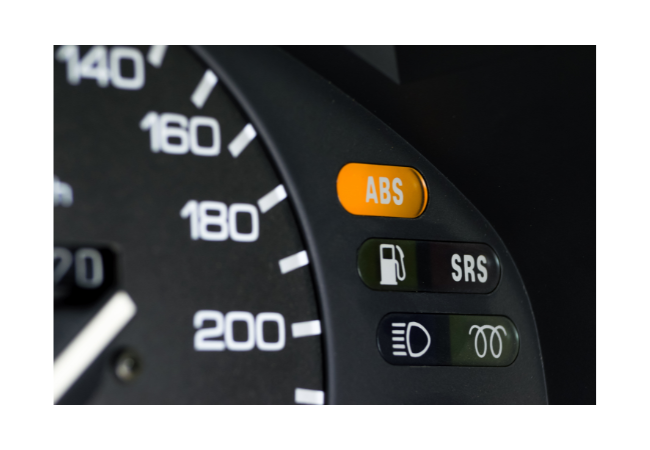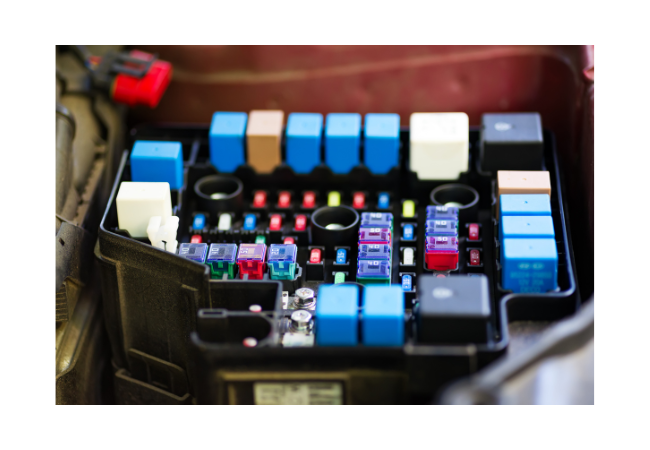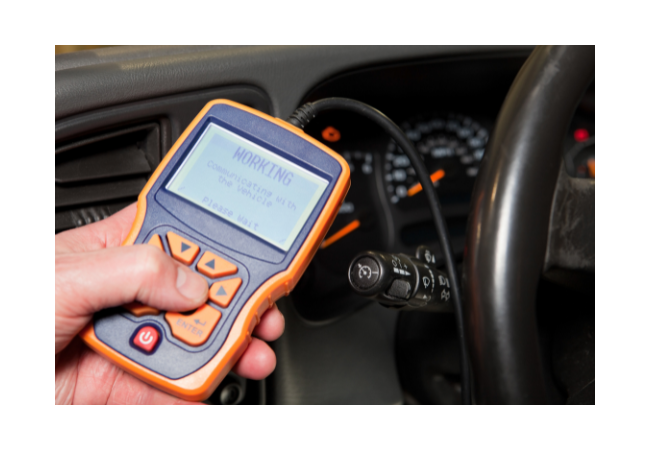Have you ever faced the frustration of seeing your ABS light turn on, leaving you puzzled about how to turn it off without a scan tool? Worry no more! This comprehensive guide will walk you through the process of how to reset Ford ABS light without scan tool, helping you get back on the road with a properly functioning braking system. Why spend hours searching for a solution when you can find all the information you need right here?
Not only will this guide provide you with a step-by-step process to reset the ABS light, but it will also educate you on the importance of the ABS system and the common reasons for the light activation. By the end of this guide, you’ll have a better understanding of the ABS system and how to maintain its optimal performance.
Contents
Key Takeaways
- Understanding Ford’s ABS System and its components is key to improving braking performance.
- Common reasons for the activation of the Ford ABS Light include faulty wheel speed sensors, low brake fluid levels, or damage to wiring/connectors within the system.
- Resetting Ford ABS Light without a scan tool involves disconnecting battery, locating & checking fuses, manual cycling & addressing underlying issues. Professional help may be necessary at an estimated cost of $50 – $200.
Understanding Ford’s ABS System

Modern vehicles, including Ford models, are equipped with the ABS (Anti-lock Braking System), a vital safety feature that prevents wheel lockup and skidding during sudden braking events, especially on slippery surfaces. This system helps keep the vehicle stable and under control. Consequently, if the ABS warning light comes on, it is vital to acknowledge it as it indicates a potential malfunction in the car’s anti-lock braking system. Ignoring this issue could affect braking performance and put your safety at risk.
The ABS system functions by continuously monitoring the speed of each wheel and adjusting the brake pressure accordingly. This ensures efficient braking while allowing you, the driver, to maintain steering control. The ABS system light serves as an indicator of any issues with the system.
Having grasped the basics of the ABS system, including the crucial role of the ABS pump, we can now delve into its components and their role in enhancing braking performance.
Components of the ABS System
The ABS system consists of three main components:
- ABS sensor (wheel speed sensors): These sensors determine the rate of movement of each wheel and relay this information to the ABS.
- ABS control module: This module monitors the wheel speed sensors and makes adjustments to the brake pressure as necessary.
- Hydraulic control unit: This unit increases brake fluid pressure, allowing the wheels to remain in contact with the road.
These components work seamlessly to ensure the proper functioning of the ABS system. Any malfunction in these components can cause the ABS light to turn on, indicating a need for immediate attention.
Understanding the critical role of these components gives us a deeper appreciation of how the ABS system enhances braking performance.
How ABS Improves Braking Performance
The Anti-lock Braking System enhances braking performance by enabling you to maintain control of your vehicle during emergency braking scenarios. While ABS may not necessarily reduce braking distance, it allows you to direct the vehicle while applying maximum braking force. This prevents the wheels from locking up and provides improved stability and maneuverability.
The ABS system achieves this by detecting and releasing brake pressure on specific wheels if they are not rotating while others are. This constant monitoring and adjustment of brake pressure prevent wheel lockup and skidding during emergency braking situations, ultimately contributing to a safer driving experience.
Common Reasons for Ford ABS Light Activation
After understanding the significance of the ABS system, it’s important to identify the common triggers for the ABS light in a Ford vehicle. Some potential causes may include faulty wheel speed sensors, low brake fluid levels, or damage to wiring or connectors within the ABS system. The most frequent cause of the ABS light appearing on the dashboard is a defective speed sensor. When the ABS light is illuminated, it is advisable to drive and brake slowly, have a professional mechanic diagnose the cause, and attempt to reset it initially.
Before trying to reset the ABS light, it’s necessary to resolve the particular issues triggering its activation. In the following sections, we will explore each of these common causes in greater detail, as well as provide guidance on how to reset ABS light once the issues have been resolved.
Faulty Wheel Speed Sensors
A malfunction of the wheel speed sensor may be responsible for the ABS light illumination. These sensors are critical to the proper functioning of the ABS system, and any issues with them can result in the activation of the ABS light. To inspect the speed sensors, you should:
- Verify that there is no heavily coated corrosion and no dents.
- Ensure all electrical wiring is properly secured.
- Look for any signs of stress, such as melted or cut wires.
If you find that your wheel speed sensors are faulty, replacing them is necessary to ensure the proper functioning of your ABS system. Replacing a faulty speed sensor is estimated to cost approximately $100, with most of the cost attributed to labor. The cost of a speed sensor is relatively cheap. It usually does not exceed $20.
Low Brake Fluid Level
A decrease in brake fluid levels can result in the activation of the ABS light, thus disabling the system. To ensure that brake fluid levels are accurate, you should inspect the reservoir and confirm that the level is at the desired amount. If you find that your brake fluid level is low, you should replenish the brake fluid reservoir with the appropriate brake fluid.
If the ABS light illuminates again shortly after resetting it due to low brake fluid levels, it is likely that some other fault needs to be addressed. In such cases, it is crucial to seek professional assistance to diagnose and resolve the issue.
Damaged Wiring or Connectors
Damaged wiring or connectors within the ABS system can also trigger the ABS light. To inspect the wiring and connectors for any damage, such as fraying, cracking, or broken insulation, you should visually inspect them. Additionally, you should assess the wiring and connectors for corrosion by inspecting for any signs of rust or discoloration.
If you find any damaged or corroded wiring and connectors, it is essential to install new wiring and connectors to replace the damaged ones. Once the necessary repairs have been made, you can proceed to verify that the ABS system has been reset by starting the engine and pressing the brake pedal several times. If the ABS light is no longer illuminated, the reset was successful.
Step-by-Step Guide: Resetting Ford ABS Light Without Scan Tool
Resetting the Ford ABS light without a scan tool may seem like a daunting task, but with the right guidance, it is entirely possible. This step-by-step guide will provide you with the necessary information to reset the ABS light on your Ford vehicle without the need for a scan tool. Keep in mind that it is crucial to address any underlying issues causing the ABS light activation before attempting a reset, as previously discussed.
Here is a detailed step-by-step process on how to reset the ABS light without a scan tool, beginning with disconnecting the battery.
Disconnecting the Battery

Disconnecting the battery is the first step to reset the ABS light without a scan tool. This should clear the error codes that triggered the light. To do this, follow these steps:
- Ensure that the ignition key is in the off position, and the parking brake is engaged.
- Locate the car battery, typically situated in the engine bay.
- Identify the negative terminal, indicated by a minus (-) sign.
- Use a wrench or socket to loosen the nut on the negative terminal.
- Gently remove the negative cable from the terminal.
While disconnecting the battery, precautions should be taken to prevent unintentional reconnection. Make sure to secure the cables to keep them away from the battery terminals.
After disconnecting the battery, you can proceed to the next step: locating and checking ABS fuses.
Locating and Checking ABS Fuses
The ABS fuse is typically located in the fuse panel, generally under the dashboard or in the engine compartment. For further information, please refer to your vehicle’s manual for the exact location of the ABS fuse. To identify a blown ABS fuse, inspect it, and note that the ABS fuses are clearly marked, and their location can be found on the cover of the fuse box.
If you find a blown ABS fuse, you will need to replace it. To do this, follow these steps:
- Ensure that the engine is turned off and the emergency brake is engaged.
- Use a fuse puller or a pair of needle-nose pliers to remove the blown fuse. Exercise caution when doing so to ensure it is pulled from the socket safely.
- Insert a new fuse with the same rating into the empty socket.
- Finally, secure it in place.
Once you have replaced the ABS fuse, you can move on to the next step: manually cycling the ABS system.
Manual ABS System Cycling
The final step in resetting the Ford ABS light without a scan tool is manually cycling the ABS system. This process involves driving the vehicle at a speed of over 5 mph (8 km/h) and then abruptly applying the brakes. This action will manually cycle the ABS system, realigning its parameters and making it operational once again.
After completing the manual ABS system cycling, start the engine and press the brake pedal several times to confirm that the ABS light has been reset. If the ABS light is no longer illuminated, congratulations – you have successfully reset the Ford ABS light without a scan tool!
Safety Precautions and Considerations

Before embarking on the process of resetting the ABS light without a scan tool, it’s important to familiarize yourself with important safety measures and factors to consider. Ensuring that you address any underlying issues causing the ABS light activation is crucial for the proper functioning of your vehicle’s braking system. Driving with the ABS light on is not recommended, as it can potentially increase the risk of an emergency braking situation.
It is also not advised to turn off or reset the ABS light without identifying and addressing the issues. Taking these safety precautions and considerations into account will not only ensure the proper functioning of your vehicle’s ABS system, but also help maintain your safety on the road.
Addressing Underlying Issues
As mentioned earlier, addressing ABS issues before resetting the light is crucial to ensure the ABS system works properly and the ABS light doesn’t get triggered due to an unresolved problem. Potential causes of ABS light activations may include:
- Faulty ABS sensors
- Damaged ABS rings
- Low brake fluid levels
- Malfunctioning ABS module
- Electrical issues in the ABS system
- Brake system malfunctions
By identifying and resolving these underlying issues, you can ensure the proper functioning of the ABS system and prevent the Toyota ABS light from being triggered due to an unresolved problem.
Professional Assistance
Should you have difficulties in resetting the ABS light or if the cause of its activation remains unclear, it’s highly advised to seek professional help. A certified mechanic can diagnose the issue and reset the ABS light if required. The cost for professional assistance to reset the Ford ABS light may vary depending on the shop or dealership chosen and the complexity of the issue. Generally, an estimate of $50 to $200 should be expected for the service.
To find a reliable professional, conduct thorough research, assess online reviews, and seek recommendations from acquaintances and relatives. Additionally, make sure the shop or dealership you select is certified and has expertise working on Ford vehicles.
Summary – How to Reset Ford ABS Light Without Scan Tool
In conclusion, resetting the Ford ABS light without a scan tool is an achievable task with the right guidance and understanding of the ABS system. This comprehensive guide has provided you with a step-by-step process, common reasons for ABS light activation, and the importance of addressing any underlying issues before attempting a reset.
By following these steps and taking the necessary safety precautions and considerations, you can ensure the proper functioning of your vehicle’s ABS system and maintain a safe driving experience on the road. Remember, if you are unsure or unable to reset the ABS light yourself, seeking professional assistance is always a wise choice.
Frequently Asked Questions
How do I clear my ABS code without a scanner?
Disconnect the positive cable from your car battery, hold down the brake pedal to drain the electrical system, and then plug the cable back in to restore power to reset the car’s central computer and clear the ABS code without a scanner.
This process will reset the car’s central computer and clear the ABS code without a scanner.
Will disconnecting battery reset ABS?
Disconnecting and reconnecting the battery can reset the ABS light, but it may not be a permanent fix.
Hold down the brake pedal while the battery is disconnected to drain the vehicle’s electrical system and reset the central computer.
How do you bleed an ABS module without a scan tool?
To bleed an ABS module without a scan tool, quickly spin the wheel and then apply pressure to the brakes so that the ABS module kicks on.
What does abs mean on a car?
ABS stands for Anti-lock Braking System, and it helps maintain traction of the tires when a vehicle brakes suddenly. This system enables drivers to steer away from potential hazards, though it does not necessarily reduce stopping distance.
What is the primary function of the ABS system?
The primary function of the ABS system is to prevent wheel lockup and skidding during sudden braking events, providing vehicle stability and control for the driver.
